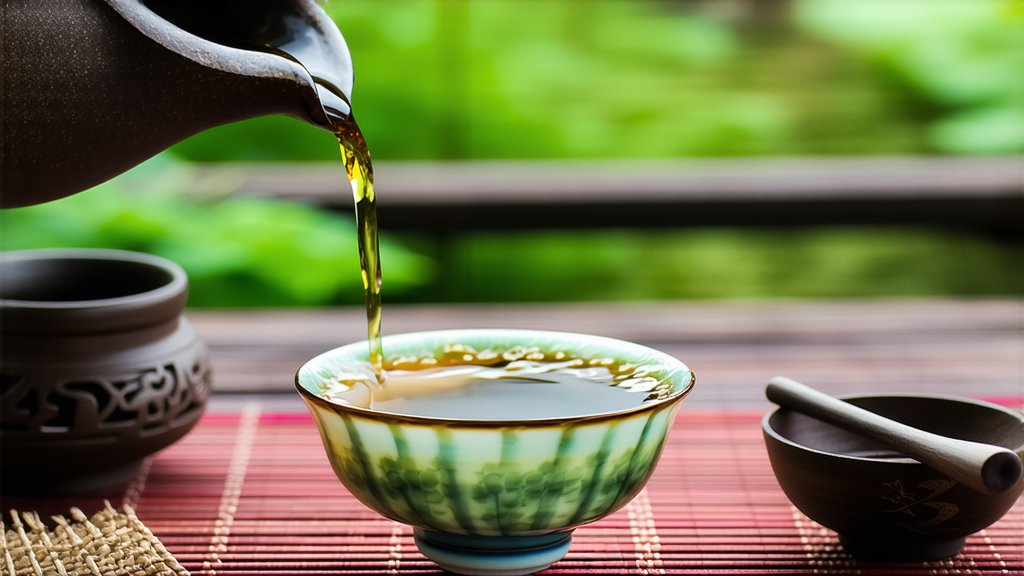
In the vast and diverse landscape of Chinese tea, Tieguanyin stands as a paragon of oolong tea excellence, embodying centuries of tradition, meticulous craftsmanship, and a profound cultural heritage. This article embarks on a journey through the annals of Tieguanyin, exploring its historical roots, varietals, intricate production process, and the art of its appreciation, offering an in-depth understanding for international readers eager to delve into the world of this extraordinary tea.
Historical Origins
The tale of Tieguanyin begins in the early 18th century during the Qing Dynasty, within the verdant hills of Anxi County in Fujian Province, China. Legend has it that the tea was discovered by a poor scholar named Wei Yin, who found a unique wild tea plant that bore resemblance to both green and black tea plants. He meticulously cultivated and processed these leaves, creating a new category of tea that combined the best qualities of both genres—thus birthing what we now know as Tieguanyin, or "Iron Goddess of Mercy."
Varieties and Cultivation
Tieguanyin is not just one single variety but rather a family of oolong teas, each with its own distinct characteristics shaped by factors such as terroir, climate, and processing techniques. Among the most renowned are Anxi Tieguanyin, which is considered the original and still highly prized for its complex flavor profile, and Taiwanese High Mountain Tieguanyin, known for its delicate aroma and smooth taste due to its cooler growing conditions at higher altitudes.
Cultivation of these teas involves traditional methods passed down through generations. The tea bushes are often grown on steep slopes, where they thrive in the misty mountain air and receive optimal sunlight exposure. Pruning and plucking are done with precision, ensuring only the youngest and freshest leaves and buds are harvested for the finest quality tea.
The Craft of Production
The magic of Tieguanyin lies in its elaborate production process, a harmonious blend of art and science. It starts with sun-withering freshly picked leaves under bamboo mats to reduce moisture content while allowing enzymatic activity to begin. This step imparts a subtle sweetness to the leaves.
Next comes the bruising or rolling stage, where the leaves are tossed and turned in large woks or baskets to break down cell walls, releasing juices that will later contribute to the tea's distinctive flavor. Following this, the leaves undergo partial oxidation, a delicate balance between green (non-oxidized) and black (fully oxidized) tea processes, giving Tieguanyin its characteristic golden hue and rich aroma.
After oxidation, the leaves are subjected to a high-temperature fixation to halt enzymatic action, preserving their unique flavors. They are then rolled into tight pellets or twisted shapes, followed by multiple rounds of roasting to further develop depth of flavor and remove any remaining moisture. Finally, the tea is cooled and sorted, with only the finest leaves making it into the final product.
The Art of Appreciation: Gongfu Cha Ceremony
To truly appreciate Tieguanyin, one must engage in the ancient practice of Gongfu Cha, also known as the "tea ceremony of skill and effort." This ritualistic preparation method emphasizes control over water temperature, brewing time, and the sequence of pours, all aimed at extracting the full spectrum of flavors from the tea.
Begin by warming the teapot and cups with hot water to ensure even heat distribution. Place approximately 5 grams of Tieguanyin into the pot, using a tea pick or scoop to avoid crushing the leaves. Pour boiling water (around 90°C/194°F) over the leaves, quickly rinsing them to awaken the dormant flavors before discarding this first infusion. Subsequent infusions should be steeped progressively longer, typically ranging from 15 seconds for the second brew up to a minute or more for later ones, depending on personal preference and the strength desired.
Each brew reveals different facets of the tea's character—initial floral and fruity notes followed by deeper, more complex earthy and mineral undertones. The experience is not merely about drinking but engaging all senses in a meditative act of savoring and reflection.
Conclusion
Tieguanyin represents more than just a beverage; it embodies a living tradition that bridges history, culture, and artistry. From its mythical origins to the meticulous handcrafting process, every aspect of Tieguanyin speaks to the dedication and passion of those who have nurtured it over generations. As you embark on your own exploration of this remarkable oolong tea, remember that each cup is an invitation to connect with a legacy that spans centuries, inviting you to slow down, savor, and appreciate life's simple yet profound pleasures.